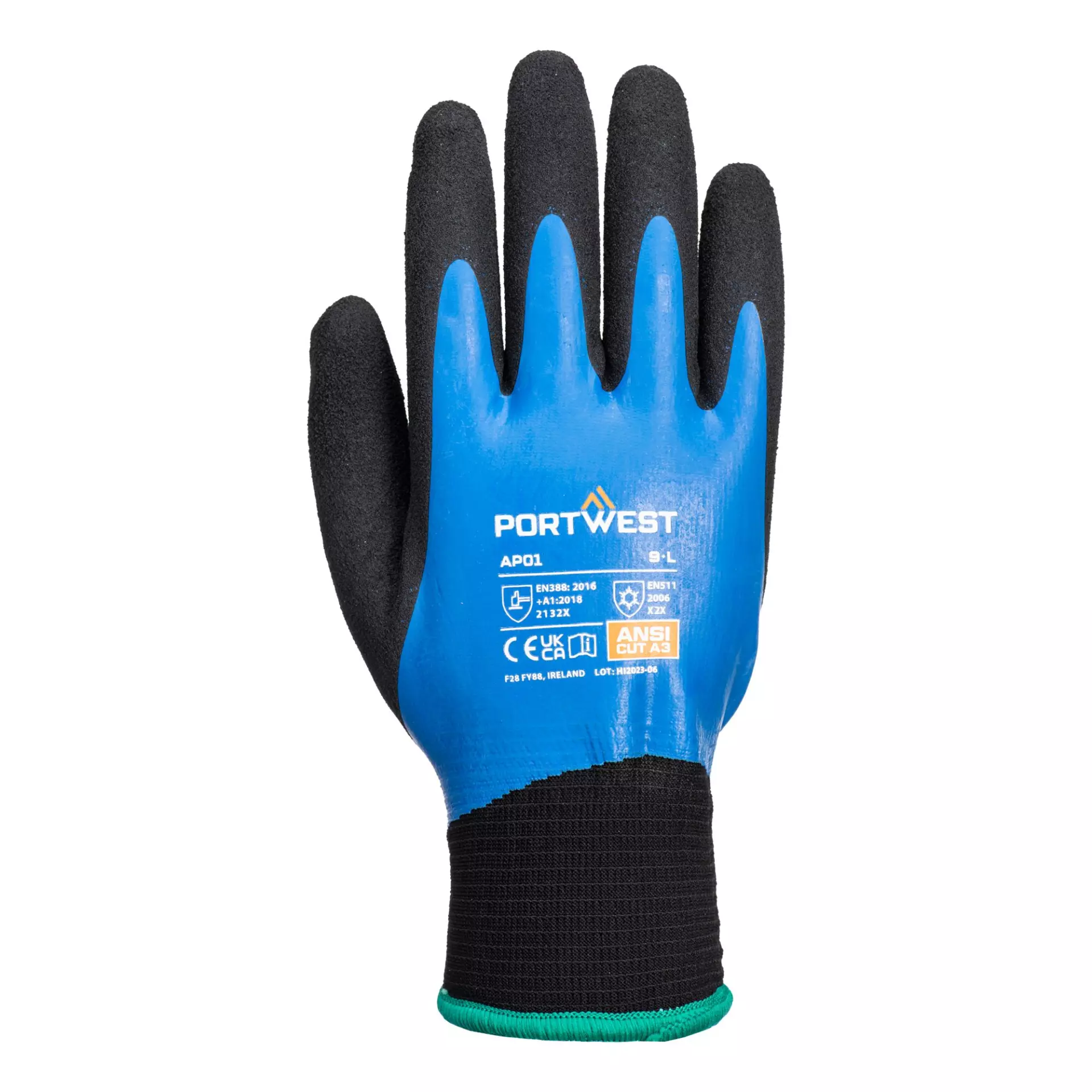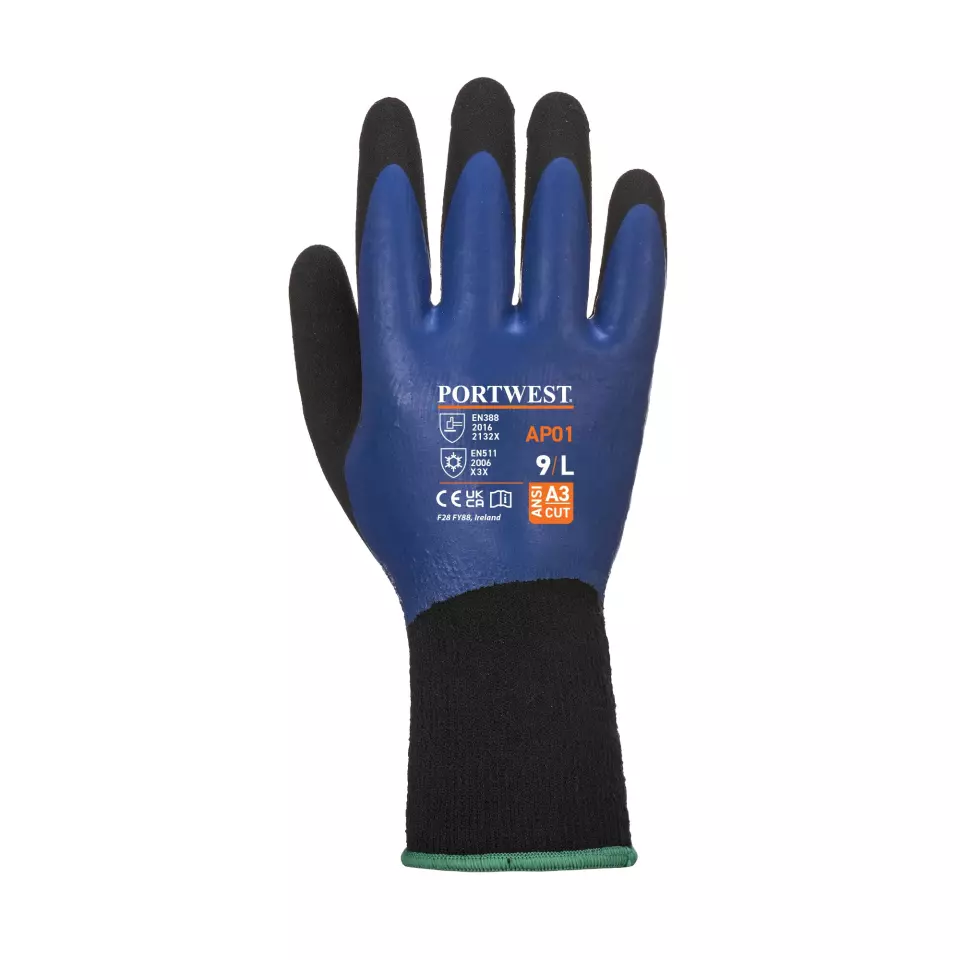


Features You'll Love

Grip Finish · Foam
The surface texture or coating on the palm and fingers that determines how securely the gloves can grip tools, materials, and surfaces during work tasks.

EN 388 · Abrasion Resistance Level 2, Tear Resistance Level 3, Puncture Resistance Level 2
EN 511 · Cold Contact Level 2
Withstands moderate rubbing and friction, offering good protection for tasks involving handling rough materials.
Offers strong resistance against ripping, making the material durable against snags and tears.
Withstands moderate force from sharp objects like heavy-duty splinters or wires.
This glove provides good insulation when directly handling cold objects for a moderate duration. It's ideal for tasks like working in cold stores or handling chilled or frozen items, offering a solid mid-range of thermal protection.
Portwest
Thermo Pro Glove, Blue/Black, 12 pairs
Thermo Pro Glove, Blue/Black, 12 pairs
(15)
108,17 €
Price per 12 pairs
9,01 € / pair
Choose size
Free delivery
Features You'll Love

Grip Finish · Foam
The surface texture or coating on the palm and fingers that determines how securely the gloves can grip tools, materials, and surfaces during work tasks.

EN 388 · Abrasion Resistance Level 2, Tear Resistance Level 3, Puncture Resistance Level 2
EN 511 · Cold Contact Level 2
Withstands moderate rubbing and friction, offering good protection for tasks involving handling rough materials.
Offers strong resistance against ripping, making the material durable against snags and tears.
Withstands moderate force from sharp objects like heavy-duty splinters or wires.
This glove provides good insulation when directly handling cold objects for a moderate duration. It's ideal for tasks like working in cold stores or handling chilled or frozen items, offering a solid mid-range of thermal protection.
Product description
Professional cold-weather protective gloves featuring dual latex coating technology for superior grip and liquid protection. The insulated 13-gauge liner provides thermal protection while maintaining dexterity and precise fit. Ergonomically designed with latex foam coating, these gloves deliver excellent performance in wet and dry conditions while offering high resistance to abrasion and tearing.
Product Features:
- Dual latex coating for superior grip and liquid protection
- Insulated liner for cold weather protection
- Latex foam coating for excellent grip in wet and dry conditions
- 13 gauge liner construction for durability and precise fitting
- Ergonomic design to reduce hand fatigue
Technical Details:
- Fully coated for maximum liquid protection
- Superb abrasion and tear resistance
- CE certified
- EN ISO 21420: 2020 Dexterity 5
- EN 388: 2016 + A1: 2018 (2132X)
Recommended Applications:
- Specially designed for use in cold conditions
Standards:
- EN 511: 2006 (X2X)
- ANSI/ISEA 105: 2016 CUT Level (A3)
- ANSI/ISEA 105: 2016 ABRASION Level (3)
- ANSI/ISEA 105: 2016 PUNCTURE Level (3)